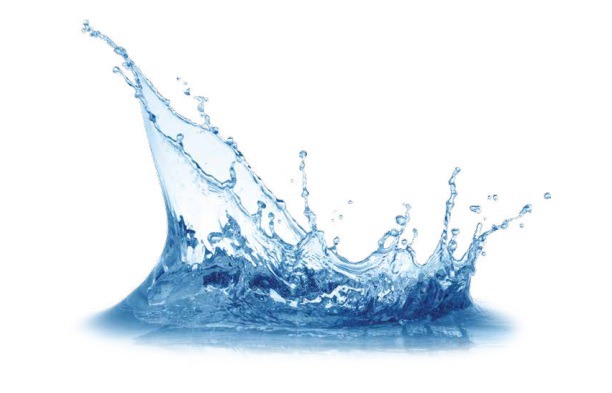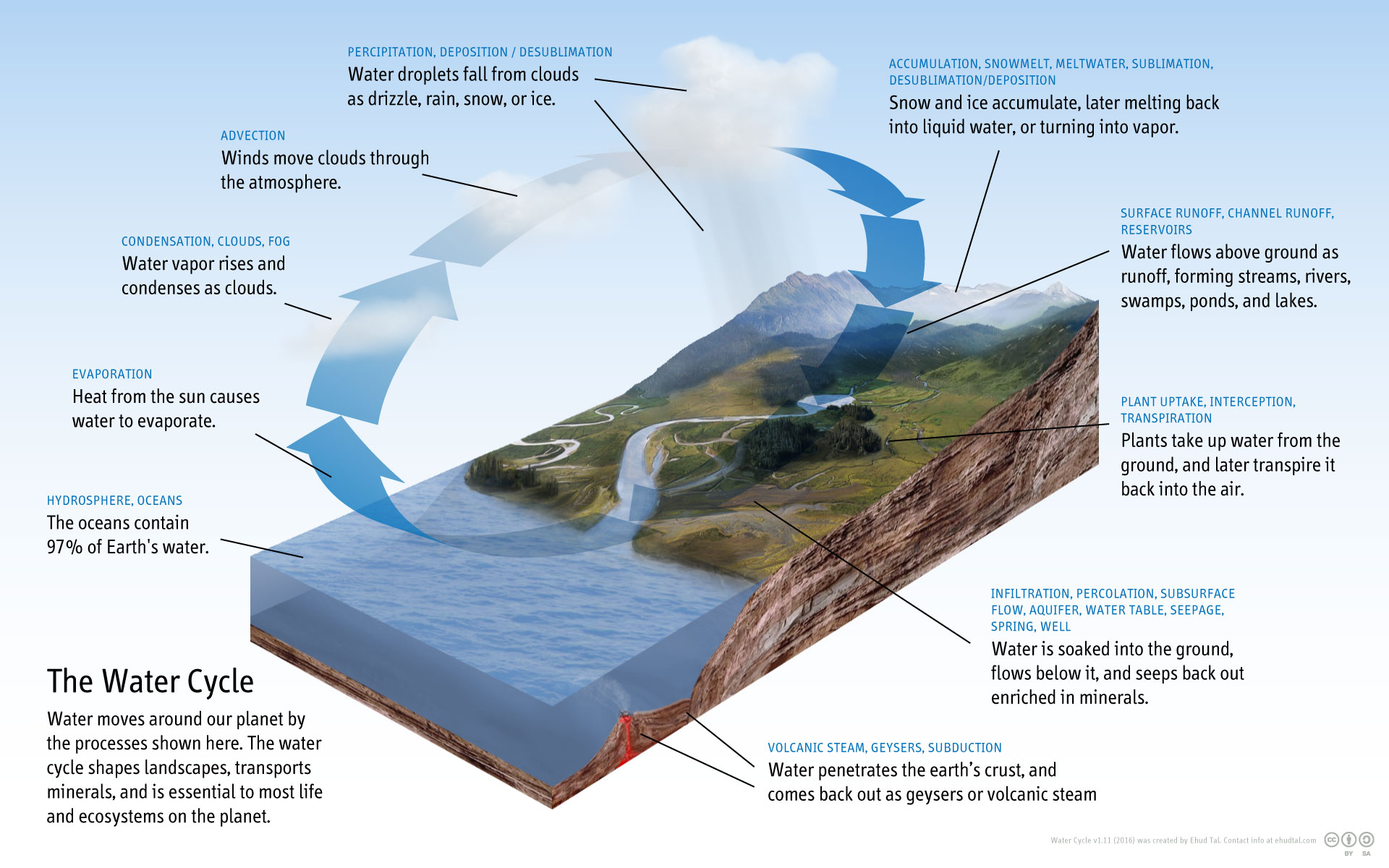The water cycle, also called the hydrologic cycle, describes the continuous movement of water in all its states (liquid, gas, and solid). This movement occurs above, at, and below the Earth’s surface.
Look at a globe and much of its surface is blue in colour. Over 70% of the Earth’s surface is covered in water. Oceans contain 96.5% of all water, leaving only 3.5% of fresh non-seawater.
Water is in its purest natural state at the point of evaporation in the air above the Earth. As it condenses and falls to Earth as precipitation, it picks up impurities like dust, micro-organisms, gases, and pollutants as it replenishes water in the oceans, lakes, rivers, and streams. Some is absorbed into the ground where it percolates through soil, rock, and mineral to underground streams and lakes, called aquifers or groundwater.
As the sun warms the Earth, it evaporates water on its surface, causing the entire hydrologic cycle to begin again.
Characteristics of Various Water Sources
Rain Water
After the water picks up impurities in the atmosphere and percolates through the ground, it comes into contact with carbon dioxide and then forms carbonic acid. This dissolves some of the mineral content of the soil or rock it contacts, thus adding these minerals to the water.
Surface Water
Water from streams may be turbid due to the presence of silt, clay, etc. However, in larger surface water, a greater amount of self-purification takes place through aerobic digestion, plant life, fish, etc. and the quality of the water could change to a great degree.
Ground Water
Normally picks up the minerals it flows through. As a general rule, water from deep wells contains a higher mineral content. It is less likely to contain organics or turbidity. Water from shallow wells is usually lower in mineral content. It also and may be subjected to pollution or other bacteria which is available from various sources nearby (e.g. spring run-off through forests and hills, plants, industrial wastes, etc. which will all pass various bacteria into the water).
Impurities
Impurities in water are divided into two classifications:
1. Dissolved Solids
Those which naturally dissolve into water. NOTE: Gases may also dissolve into water unless they combine chemically with other impurities. They will be released into the atmosphere upon boiling and are not truly classified as dissolved solids. Upon evaporation, only the dissolved solids would remain in the actual mineral form and then can be analyzed by actual weight of the various elements.
2. Suspended Solids
Consist of clay, mud, silt, etc. and will not dissolve into water naturally but remain as such in their present state.
Water treatment and pollution control is one of the largest and most important industries in the modern day world. As can be seen from the preceding information, water treatment is a very broad and varied field and chemical analysis of certain water supplies is virtually impossible to completely break down. In time, modern man may discover additional information regarding the field of water treatment and the entire cycle of the earth’s largest and most important single resource.
The hydrologic cycle is an integral part of life in Manitoba and Northwestern Ontario. One-sixth of Manitoba’s total area is made up of lakes, rivers, and streams. The province of Ontario contains 20% of the world’s fresh water. The western part of Northwestern Ontario, from the Manitoba border east to Dryden and Fort Frances, freshwater lakes dot the rugged terrain of the Canadian Shield.
We are fortunate to have an abundance of water in our part of the world. While it provides recreational and commercial opportunities, our water is a blessing to each of us in our daily lives.

Two Sources of Water
Municipal (City) Water
- Water supplied from a water treatment facility
Well Water
- Access to groundwater stored in aquifers
Keep in mind that many of our municipalities source their water from groundwater via wells. Steinbach, Stonewall, Selkirk, Gimli, East St. Paul, and Beausejour are few of the many using water from aquifers as their water source. All municipalities do what is required to ensure water is potable and safe to drink. However, it still may contain characteristics that can be improved for aesthetic qualities like taste, smell, and hardness with in-home treatment.

